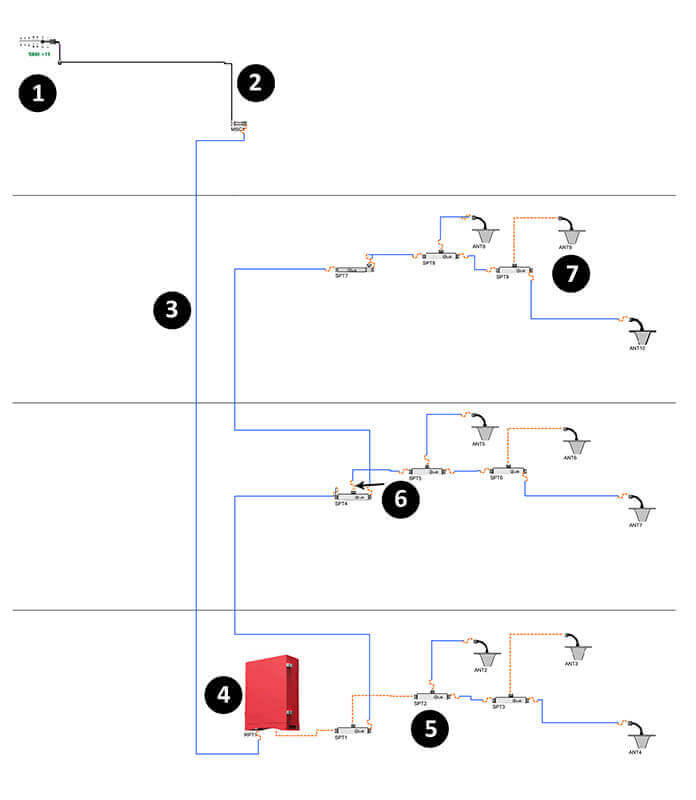
- Outdoor Antenna
Mounted high on the exterior/roof of the Building, the antenna is used to capture the macro signal and transmit signal back to the tower. These antennas are mounted in the direction of the optimal cell or radio tower. - Outdoor Coax Cable
Outdoor coax cable will need to be UV rated to survive the elements. - Indoor Coax Cable
Indoor coax cable is typically plenum, which is required in many jurisdictions. Typically, any vertical coax run will require additional fire protection rating. - Bi-Directional Amplifier (BDA) Unit
The BDA takes the signal from the outdoor antenna, amplifies it, and redistributes it through the DAS. Battery backup systems and NEMA rated enclosures are required for this unit for public safety. - Splitters & Tappers
Splitters typically divide the signal evenly, splitting the signal strength 50/50. Tappers provide the same splitting function only with the ability to attenuate the tapped feed allowing a more managed power allocation for downstream antennas. A properly designed DAS will have even power distribution throughout the building. - Jumper Cables
Jumper cables help with ease of installation - Indoor Antenna
Provide RF access to the cellular or Public Safety Radio end users via the DAS. Low profile antennas are available for more discreet installations.









